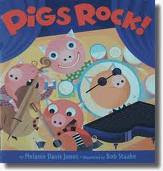
Matas, Carol. 2003. ROSIE IN NEW YORK CITY: GOTCHA! New York: Aladdin Paperbacks. ISBN 0689857144 [Suggested Grade Levels 3-6]
SUMMARY AND ANALYSIS
Eleven year old Rosie’s biggest worries are going to school and staying out of trouble. Her father loses the family’s savings, and her mother catches pneumonia. Rosie takes her mother’s place at a shirtwaist factory. The working conditions are horrible, and the girls can get fined for anything. Rosie wants to participate in the strike, but her family could go hungry. Just when life settles down, her father announces that they are moving to another city. Rosie wonders if the challenges will ever end.
The story is told from Rosie’s point of view, so the reader can watch her transition from carefree schoolgirl to oppressed factory worker. She grows up fast during the strike. At one point, she is assaulted, arrested, and put into jail. She wonders how she will survive in the cell for five days since her family does not have the money to bail her out. Rosie is a spirited young girl who views challenges as adventures. Even though she is sad about leaving her friends in New York, she looks forward to the new adventures she will have in Chicago. The book will show readers what workers had to go through in the early twentieth century.
CONNECTIONS
The book can start a discussion about work conditions in the early twentieth century. They can read other books about this time period to educate themselves.
Kids can also talk about the various challenges that they face in life.
RELATED BOOKS
Other books about labor unions:
Colman, Penny. STRIKE!: THE BITTER STRUGGLE OF AMERICAN WORKERS FROM COLONIAL TIMES TO TH PRESENT (1824 TO THE PRESENT) ISBN 1562944592
Larios, Richard. LA CAUSA THE MIGRANT FARMWORKERS’ STORY (STORIES OF AMERICA). ISBN 0811480712
By Christine Cortez




















